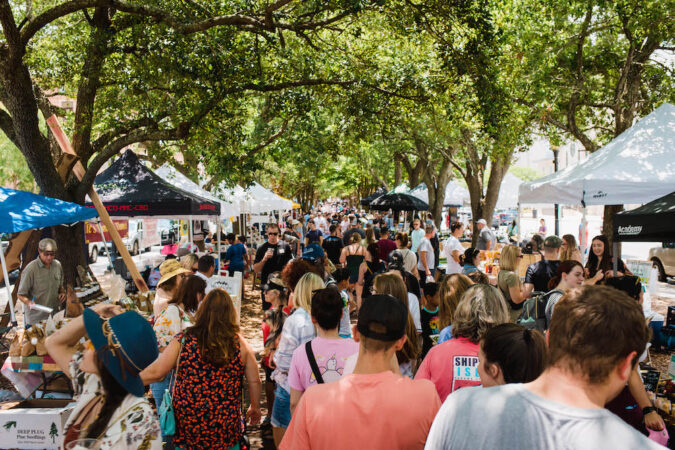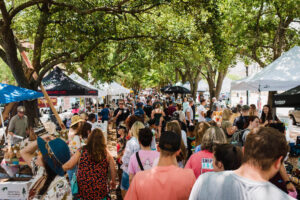
By Jeremy Morrison
When Quint Studer first arrived in Pensacola, something befuddled him.
“We were the Wild West when it came to what you could build in Pensacola,” Studer recalled. “When I first came here from Chicago, I was kind of shocked, it was like there was no rhyme or reason.”
That’s not so much the case anymore downtown, in large part due to an overlay district the city instituted. The district was a recommendation contained within Mayor Ashton Hayward’s Urban Redevelopment Advisory Committee report, which Studer, a key downtown investor, was instrumental in initiating.
With 10 years past since the URAC report, with its many recommendations aimed toward revitalizing downtown, Studer said he considers the report to have been an important step in moving downtown forward.
“In fact, mind-boggling progress has been made,” he said.
In this week’s issue of Inweekly, Studer, as well as other individuals involved with the URAC report, look back on how the report laid out a certain path forward for Pensacola’s urban core in area’s such as development, jobs and population growth, as well as where elements of the report still hold relevant for continued focus today.
In addition to recognizing the successes born out of the URAC report, these individuals also see areas that have not improved as much as hoped. For instance, one area of the URAC report focused on creating a more walkable downtown; while studies have been conducted and some tangible actions have been taken, there was a general consensus that this area demands more attention.
“I think we lag on waterfront [access] and walkability,” Studer said.
“I think the walkability has definitely improved in the downtown area, but it has a lot more to be done,” agreed Christian Wagley, who sat on URAC, and now sits on mayor-elect D.C. Reeves transition team.
Wagley said that he felt, outside of Palafox Street, downtown is still designed for vehicular traffic as opposed to emphasizing pedestrian and bicycle traffic with more walkable streets.
“On a lot of streets, especially when you get off of Palafox, the vehicle’s speed can start to increase and people feel less comfortable walking along roadways where cars are going faster,” Wagley said.
Reflecting on the report, which was issued in 2012, Wagley — who serves as a representative of the Healthy Gulf environmental organization — said he thought that if revised today the report would need to include information on how the city, as a coastal locale, should approach the issue of climate change and sea level rise.
“I think the biggest thing that comes to my mind that we didn’t really talk about then that we now know a lot more about is how climate change and specifically sea level rise is going to effect downtown,” he said. “You can see the dilemma of water moving into the city through storm drains in the decades ahead and choices are gonna have to be made.”
and specifically sea level rise is going to effect downtown,” he said. “You can see the dilemma of water moving into the city through storm drains in the decades ahead and choices are gonna have to be made.”
Climate change and sea level rise, stressed Wagley, will become key issues for Pensacola and would need to be considered by city officials going forward.
“The ballpark figure from NOAA, we’re gonna have as much sea level rise in the next 30 years as we’ve had in the last 100,” he noted. “So, that’s roughly a tripling of the rate that we’ve been use to over the last century. So, it’s really gonna create some challenges, but it creates opportunities as well.”
When Ken Ford, founder of the Institute for Human and Machine Cognition, who also served on the URAC, looks at the progression of downtown in the last 10 years he thinks it’s gone pretty well, pretty according to plan, but an uptick in general urban vibrancy has also led to an issue of concern — too many bars — that’s still shaking out.
“At this point now we essentially have an imbalance,” Ford said. “You know, a great percentage of the businesses downtown are bars. Some bars, I think are healthy, are necessary. But a whole downtown full of bars I don’t think is a good thing. So, there is a natural sort of yin and yang that takes place and it typically settles out, but this is still a young process here.”
When Ford looks to the waterfront of downtown, he sees another area he feels needs to be focused on: the Port of Pensacola.
“The port in particular is a very poor use of waterfront downtown,” Ford said.
On this front, Studer agreed.
“I think the port — and I think people might shake — but just because something is historic doesn’t mean it should stick,” Studer said. “And I think the port’s a place where, you know — what do you want to be in the port? I like the fact that I’m hearing things like a pickleball court there. I like the fact that I’m reading about the American Magic coming there. I mean, we’re too small a port to be competitive so we’re constantly happy when we’re not losing money.”
— for more on the 10-year anniversary of the Urban Redevelopment Advisory Committee report, check out this week’s Inweekly



